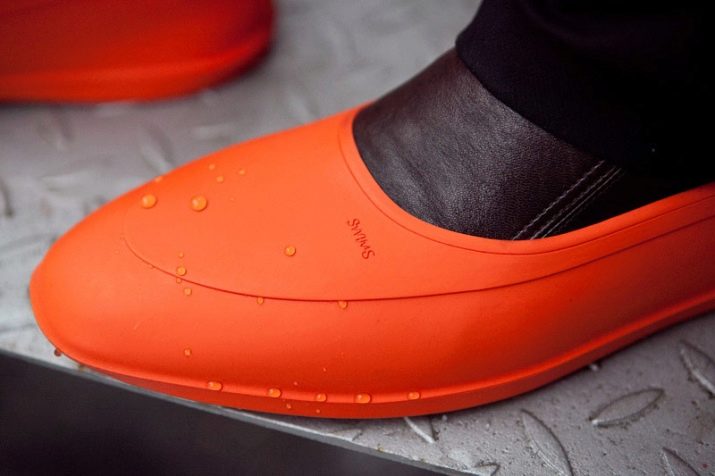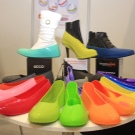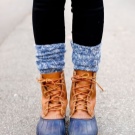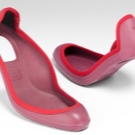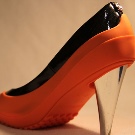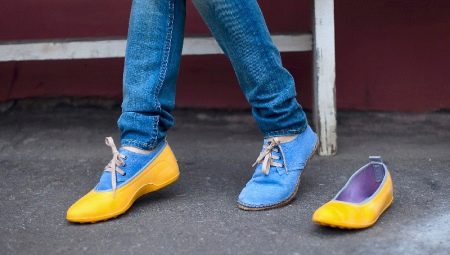The appearance of new materials and techniques for their use makes it possible not only to sew interesting, beautiful and comfortable clothes, but also to diversify the shoe industry. If previously there was a small selection of winter, autumn-spring and summer shoes, now the variability has increased significantly, and everyone can purchase one or another option according to their desire and possibilities. Great progress has been observed in the field of rubber shoes: galoshes from the usual uncomfortable and ugly shoes have become popular and original, which can be used in various situations.
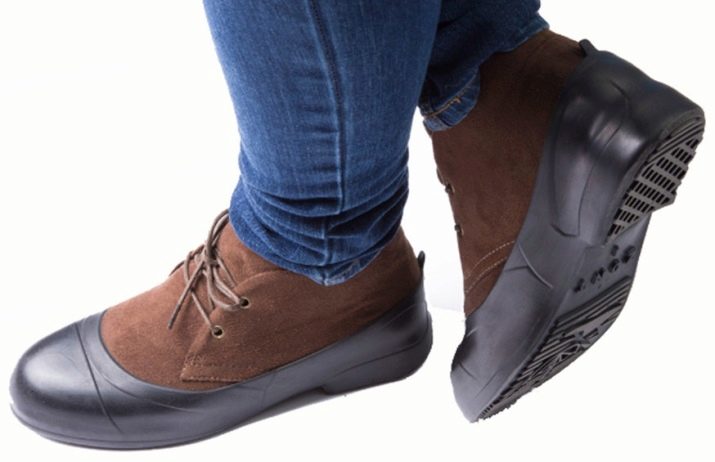
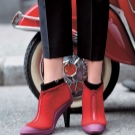
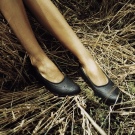
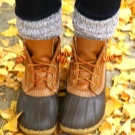
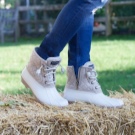
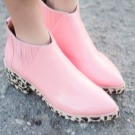
What it is?
Initially, galoshes, or, as they are also called, galoshes, were worn over shoes to protect them from dirt and moisture. Such linings were made of dense rubber, changing only the size, but not the appearance. A little later they began to produce galoshes, which already served as independent shoes, they were higher and could have an inner layer of insulation. Now there are much more options for both shoes and the material from which it is made.

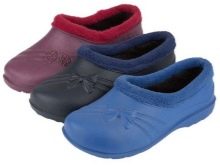
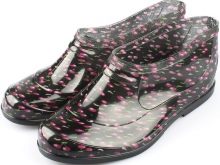
The name itself came from the French word Galoche, but in the Russian pronunciation there is a similar option - galoshes. Such variability comes from the old Russian word “kolocha,” because there is still no clear definition of the name of rubber shoes, and both options are preserved. To avoid such confusion, the writer Shishkov proposed the use of the word "wet stoops", but this idea did not find support from the public.
Initially, galoshes were part of the image and style of wealthy and noble people, various versions of such shoes were produced for both women and men.Rubber products could be as short or high as possible, have a recess for the heel or be produced without it. Later, warmed galoshes appeared, which allowed them to be worn not only in wet but also in cold weather.
The popularity of galoshes has not disappeared, they are needed and relevant in modern life, but now completely different technologies and materials are used for their production.
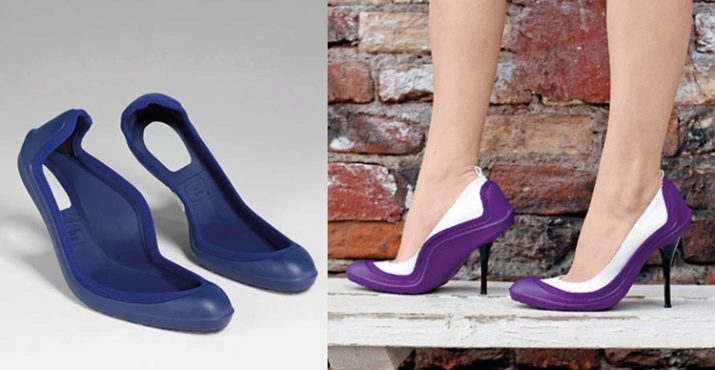

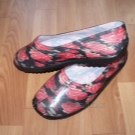
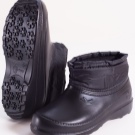


History
The pacifiers of galoshes are considered to be Indians living in South America, they made shoes using rubber. Such products turned out waterproof, but could not withstand cold temperatures. Since the idea itself was interesting, the Europeans adopted it. At the beginning of the XIX century, the process of vulcanization was invented by Chalz Goodyear, which made rubber possible from rubber.
The first mass production of rubber shoes began in America, and later spread throughout the world. In Russia, galoshes began to be produced starting in 1859 at the factory of Ferdinand Krauzkopf, a German by birth. Very soon, such shoes became popular, and the most prosperous citizens walked in galoshes. A year later, the galosh trade turnover increased significantly, reaching 1 thousand pairs per day, which allowed them to reduce their cost and make them more accessible to ordinary people. Over time, the factory changed its name to “Partnership of the Russian-American Manufactory”, and the abbreviation TRAM in the triangle was knocked out on shoes.
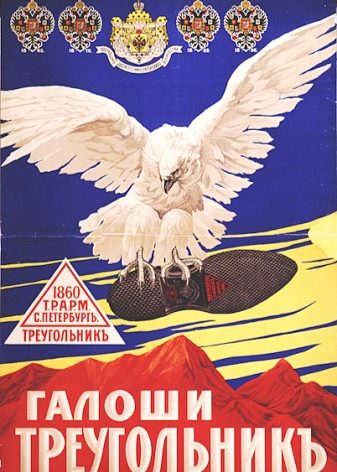
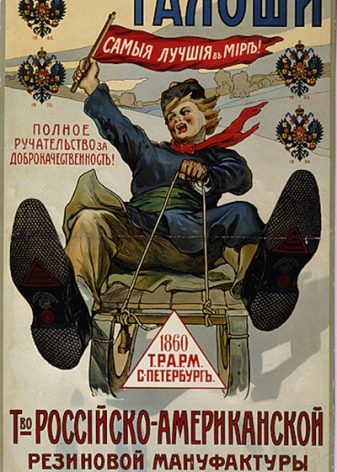
For convenience and harmony, the company changed its name - now it was called the "Red Triangle" or simply "Triangle", the scope of its activities gradually expanded, as did the number of factories around the world. Over the years, this company has maintained leadership in the production and sale of rubber galoshes and similar products. Only a few companies were able to partially compete with it.

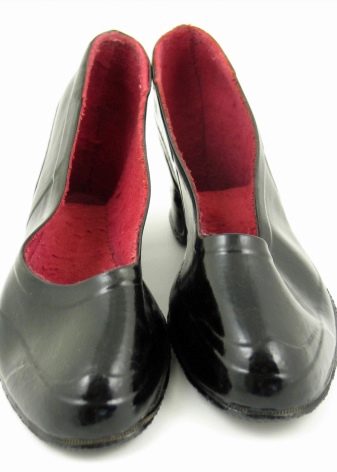
Kinds
Depending on the purpose, galoshes can have a different appearance and can be used for socks during any season. If we talk about the form, then we can distinguish the following options:
- common variety or small galoshes;
- semi-deep variety or low shoes;
- deep or boots;
- cloth shoes.
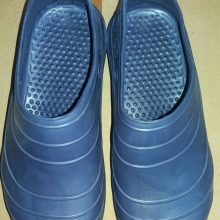
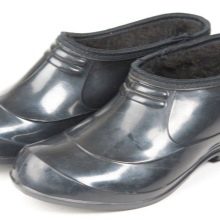
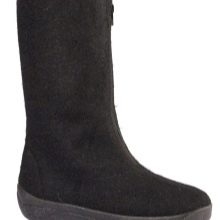
The choice of one or another variety depends on what shoes they are supposed to wear. Based on a wide variety of shoes and seasonality, a classification of galoshes according to a qualitative criterion is derived:
- warm or winter - inside there is a warm wool lining on a paper base;
- summer - the lining is light, the weight is minimal;
- as light as possible - cover only a certain part of the shoe, there are options for protecting the heel and toe, and there are galoshes with an open heel.
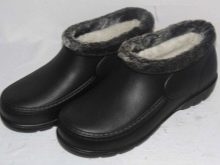

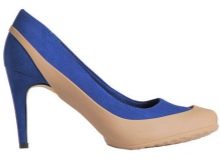
Varieties that are used instead of shoes are:
- no-galoshes galoshes;
- canvas shoes, where the sole is made of rubber and the top is made of canvas;
- canvas sports shoes in the form of sneakers;
- rubber boots and shoes for various fields of application - fishing, hunting, for swimming;
- special-purpose footwear - anti-acid for work with chemical compounds, insulating for work related to electricity.
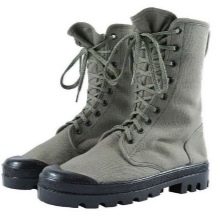
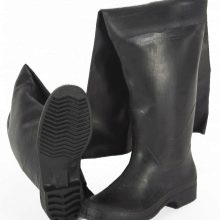
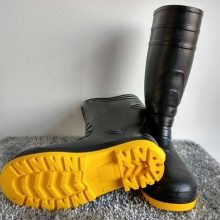
No matter what the galoshes will be used for, their quality should be as good as possible to protect feet or shoes from moisture. Many purchase model items and wear them on fashionable shoes or boots to protect them from rain and keep their feet dry and warm.
There are many varieties of galoshes that are selected for the shoes to be worn: high varieties are often used for boots, women's products are often made in heels, and for the rest of the shoes there is a huge variety of galoshes both in shape and color and material.

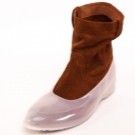




If we talk about independent shoes, then beach crocks with holes, which are convenient to wear both on the street in the summer and buy for the sea, are becoming very popular now.
Such slippers are very light, do not crush, the foot is not steamed in them, they are easy to wash and quickly dry, which makes them indispensable in the summer and on sea vacations.

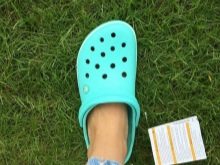
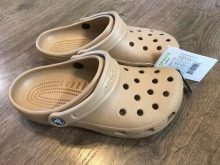
Materials
A variety of galoshes models appeared solely due to the fact that manufacturers began to use various formulations to obtain them. Consider the most popular and commonly used materials.
- Raw rubber - It is extracted from rubber trees and is used for the production of galoshes. The most suitable types of rubber for the shoe industry are: para rubber, light, medium and dark varieties of crepe and smoked shit.
The first option is expensive, because it is almost never used, and the other two are the basis for the production of galoshes. An average pair needs about 200 grams of rubber.
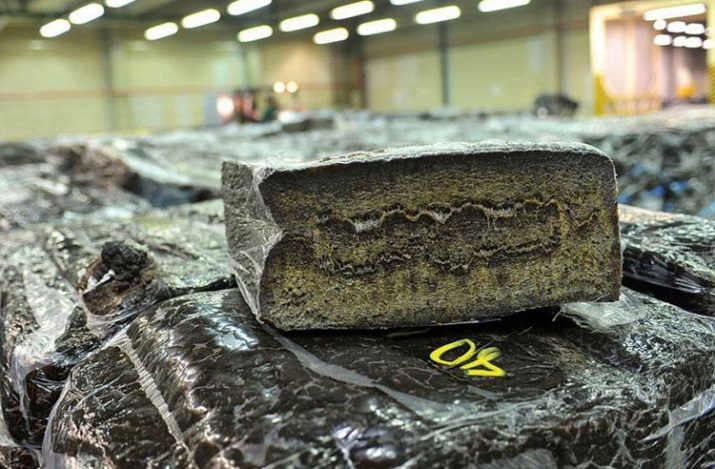
- Regenerate - a substance obtained from the processing of old rubber products is usually used to make soles in rubber shoes.

- a piece of chalk - It is used as an auxiliary substance for the manufacture of soles and the inner part of galoshes, and also is part of the glue and the upper rubber layer.
Since chalk is part of the rubber composition for the production of galoshes, its quality should be at its best.

- Glet - material contributing to the acceleration of vulcanization processes. Another purpose is to dye the material black.
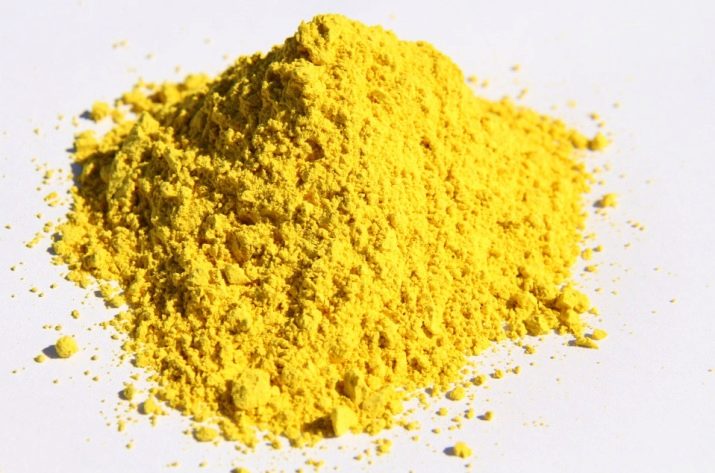
- Resin - a component that allows you to make rubber softer and more comfortable to wear.
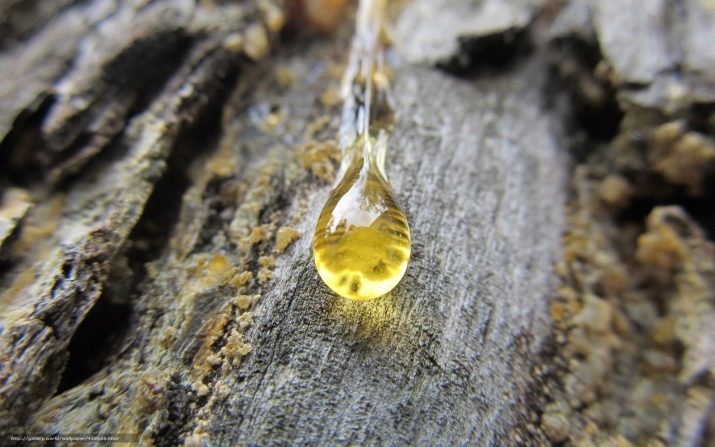
- Rosin - It is used to make rubber more strong and sticky.

- Soot - the use of gas soot allows to improve the quality of the sole, increasing its performance. In addition, soot can be used as a dye.

Using components correctly, you can get good and high-quality shoes that can fulfill their functions for a long time.
If we talk about the materials of modern galoshes, then the most popular are now PVC and EVA. The first variety is a black product with a red inner side, the sole is corrugated. The weight of such products is rather large. The second option is galoshes of a new generation, which are distinguished by lighter weight and improved performance. These are polymer products obtained by mixing ethylene and vinyl acetate.
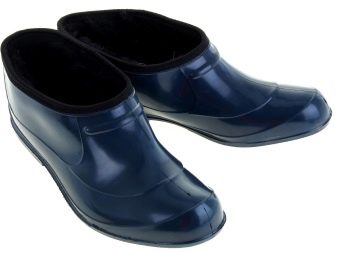

And also galoshes are made made of foam rubber, which resembles the properties of EVA. The most popular are now considered silicone galoshes that stretch well, worn on any shoes, sit tight and do not peel off, do not slip. They can be both transparent and color, and everyone can choose them individually.
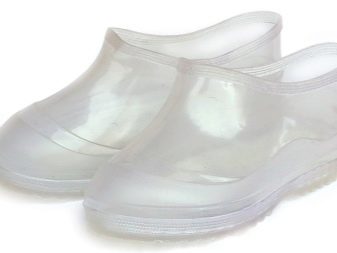

For lovers of beautiful clothes and shoes, varnished models are produced that look stylish and sophisticated, without spoiling the appearance, but, on the contrary, complementing it. For specialized needs, polyurethane varieties are produced with reinforced rubber and a strong polyurethane sole. Most often they are used for hunting and fishing along with warm liners inside, which can be either felted or felt.
So that galoshes are not let down in wet weather and last as long as possible, there is a technology for their production, which is controlled by certain standards.
So, GOST for the manufacture of galoshes has a number 126-79. Shoes and accessories made to the standards will be reliable, durable and of high quality.
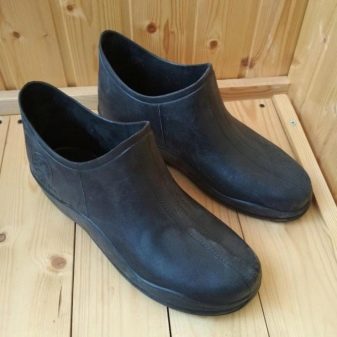
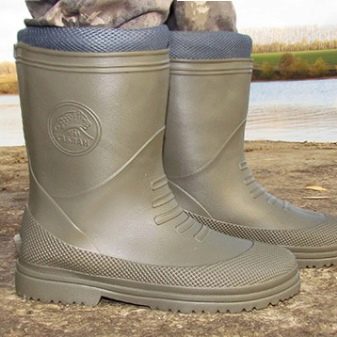
Colors
Galoshes have a clearly defined purpose, because in Soviet times, manufacturers did not pay due attention to their appearance, focusing only on product quality. Now the trends have changed, and the appearance of products, ease of use have become a priority. In addition to the standard black models, which are always in trend, they produce a variety of color galoshes.
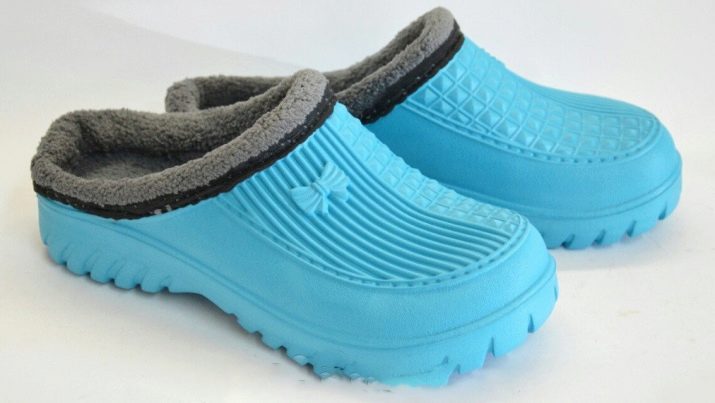
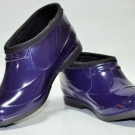
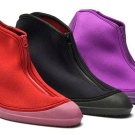

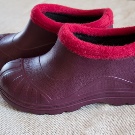
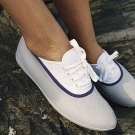
The most popular flowers now are:
- white galoshes;
- pink;
- reds;
- purple.
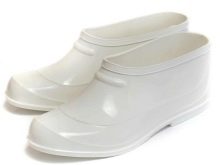
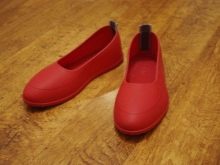
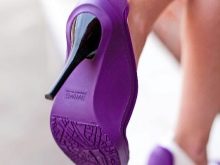
Also, camouflage galoshes used by for hunting and fishing. If there is no desire for galoshes to be noticeable, transparent products will ideally complement shoes in bad weather. It is important for girls and children to buy not only practical, but also beautiful models, because shiny, vibrant products with prints, interesting patterns and textures will be especially popular.
Under each shoe, you can choose galoshes in height, material, shape and color, which will improve the appearance of the shoe and completely protect it from rain, slush and snow, significantly increasing its life.
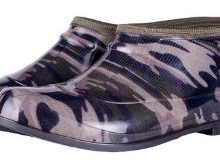

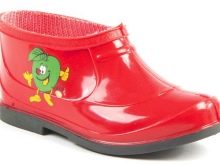
size table
Since galoshes are worn over shoes, their sizes may vary. In order to choose these products correctly for adults and children, it is important to be able to navigate in the size range of these products. When choosing rubber shoes, you need to know exactly the length of the sole, and look for galoshes that will be half a centimeter longer. If rubber shoes are selected for socks on the foot, then you need to focus on the length of the foot, and not on the size of the shoes.
Buying large galoshes will cause inconvenience in their use, and small ones will not allow them to be worn normally on shoes, and on the foot they will cause corns. In order not to make a mistake with the choice, it is worth navigating the size chart.
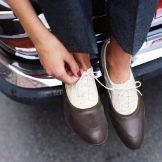
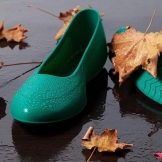
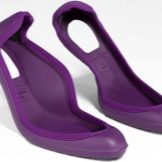
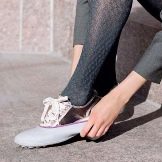
Women's shoes size | Galoshes | Foot in centimeters |
33 | 0-1 | 21 |
34 | 1-2 | 21.7 |
35 | 2-3 | 22.6 |
36 | 3-4 | 23 |
37 | 4-5 | 23.7 |
38 | 5-6 | 24.2 |
39 | 6-7 | 25 |
40 | 7-8 | 25.5 |
41 | 8-9 | 26.2 |
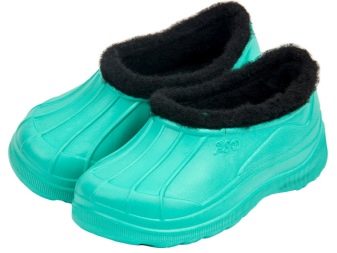
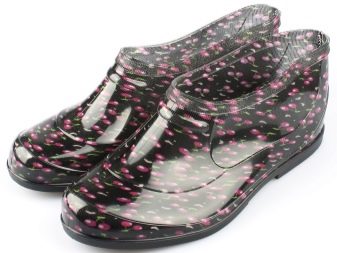
To choose a galoshes for men, you should focus on the following table:
Shoe size | Galoshes | Foot length in centimeters |
38 | 7 | 24.2 |
39 | 8 | 24.9 |
40 | 9 | 25.5 |
41 | 10 | 26.1 |
42 | 11 | 26.9 |
43 | 12 | 27.5 |
44 | 13 | 28.2 |
45 | 14 | 28.9 |
46 | 15 | 29.5 |
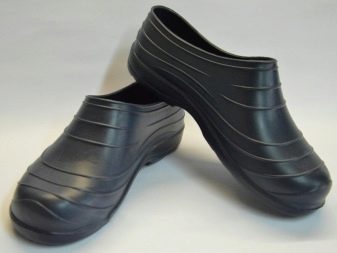
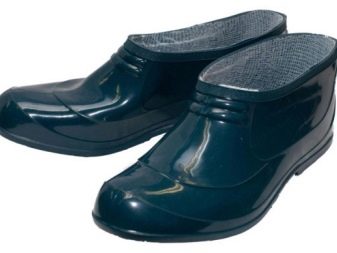
If galoshes are purchased on shoes, namely: on felt boots, then the size calculation will be different:
Boots size | Galoshes | Length in centimeters |
23 | 4 | 23 |
24 | 6 | 24 |
25 | 7 | 25 |
26 | 8-9 | 26 |
27 | 10 | 27 |
28 | 11 | 28 |
29 | 12 | 29 |
30 | 13 | 30 |
31 | 14 | 31 |
32 | 15-16 | 32 |


By correctly measuring the foot, shoes, boots, you can get the right size galoshes. It’s best not to order rubber shoes over the Internet, but to try on personally, making sure that everything sits exactly on the foot or fits well on everyday shoes.
Manufacturers
A lot of time has passed since the first galoshes appeared, their appearance, colors, and materials for production have changed. All this made it possible for a number of companies to take their place in the production and sale of rubber shoes. The most popular brands are several companies.
- Swims - Norwegian company that manufactures products to protect classic shoes from unpleasant weather conditions. Among the most popular models, classic galoshes and products with Spike soles can be distinguished.
A distinctive feature is the bright logo on the back of the galoshes.
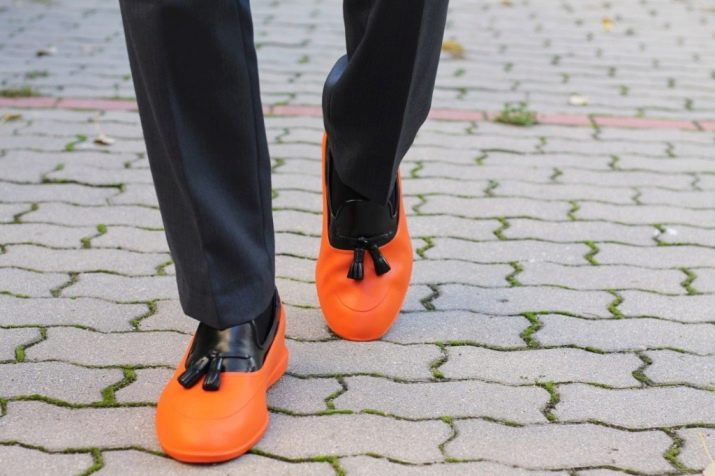
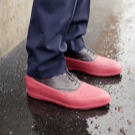
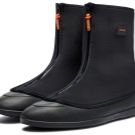
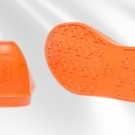
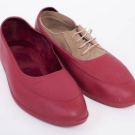
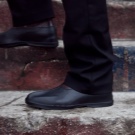
- Ecco - produces an inexpensive line of galoshes, which include 80% rubber and 20% silicone.
Customers complain that the products are slippery, and you can often see traces of them on shoes.
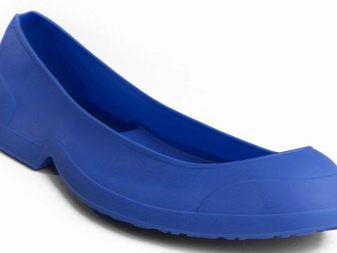
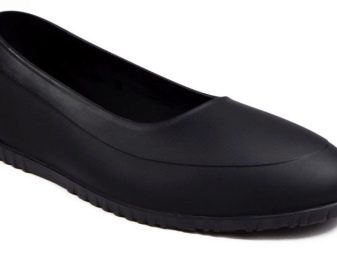
- Fred & Matt - galoshes of a Swedish company that produces goods not from rubber, but from a new material that is distinguished by high indicators of lightness and water resistance. In addition, they let air in, and the foot in such shoes breathes.
For the convenience of wearing, the product has an insole, and to protect the shoe pair, it is assumed that there is a zipper that allows you to completely close the shoes.

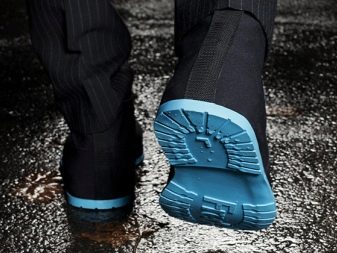
- Oyo - galoshes of Russian production, have a wide range from summer slippers to winter rubber boots.
They are distinguished by good quality, durable, but lightweight material.
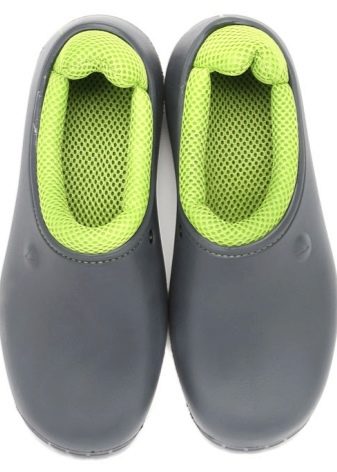
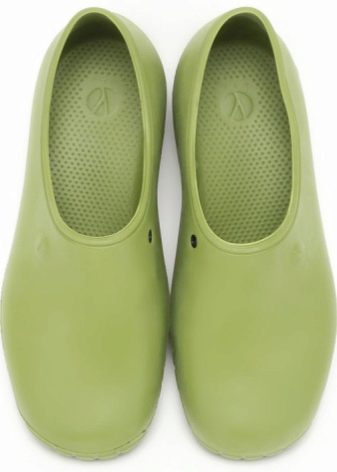
- Lucky land - A Russian brand that specializes in demi-season and winter shoes made of EVA, which has good strength, water resistance, while remaining light and comfortable.
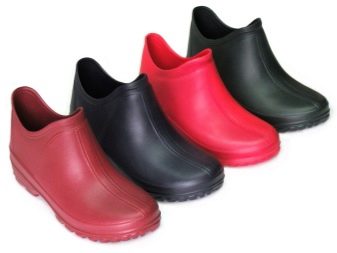
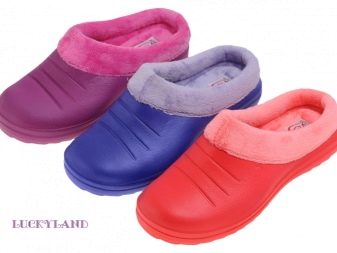
- Finnish galoshes Viking - a number of rubber boots with and without insulation are presented in the products. The sole is polyurethane, lining made of natural wool. They have increased strength and are suitable for use in cold and humid climates.
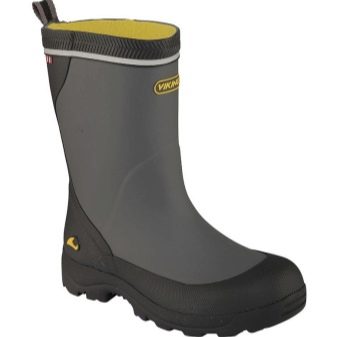
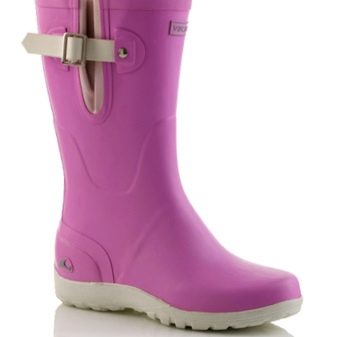
Modern galoshes can be very different both in appearance and in the material from which they are made. For maximum convenience, such products are made extremely light and elastic, so that while wearing the legs do not get tired and do not rub.
Due to the huge number of products made from PVC and EVA, everyone can choose shoes or protection for shoes, focusing on personal preferences.
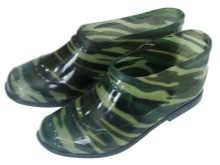
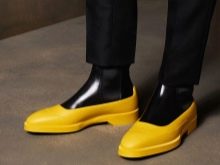
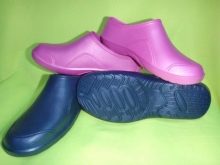
Selection recommendations
To choose the right galoshes for yourself, it is necessary to pay attention to such criteria as:
- the size;
- the presence or absence of the heel and its shape;
- color features;
- galoshes type (open or closed);
- purpose of rubber products.
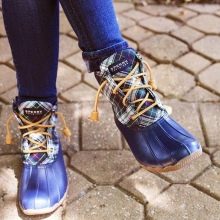
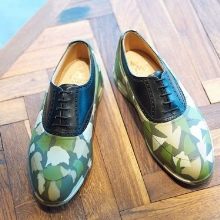
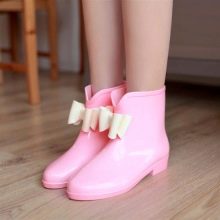
Choosing a size, you need to know the foot length in centimeters and the length of the insole of the shoe, if the galoshes are worn on top. The recommended margin for putting on a foot is 1 cm, for placement on shoes - 0.5 cm. Depending on the shoes that you want to protect, you need to select galoshes with or without heels, and pay attention to its shape. When choosing galoshes by color, you need to look at the shade of the shoe and take into account your own taste. It is recommended to use black or brown color for classic shoes, for youth style it is preferable to opt for bright colors.
If you pay attention to the type of galoshes, it is best to buy shoes that can be open, protecting the bottom of the shoe without covering it, or closed in the form of shoes that protect the shoes as much as possible.
When choosing galoshes, you need to look at their type, which should match the type of shoes - this will make them easy to put on and look organic.
